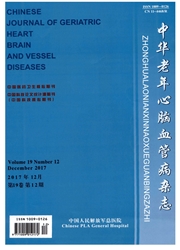

 中文摘要:
中文摘要:
目的观察补体C4d在小鼠脑缺血再灌注损伤过程中的沉积变化,探讨其在脑缺血再灌注损伤中的可能意义。方珐将32只健康雄性C57BL/6小鼠随机分为正常组、脑缺血再灌注6h组、24h组和48h组,每组8只。采用线栓法制备小鼠大脑中动脉闭塞模型,缺血1h后再灌注。记录小鼠大脑神经功能缺损程度和脑组织病理的动态变化,应用免疫荧光组织化学法检测脑内补体C4d的沉积变化。结果与正常组比较,脑缺血再灌注6h组神经功能缺损评分开始升高,24h组迭高峰,48h组逐渐下降,差异有统计学意义(P〈0.01)。脑缺血再灌注6h组海马区多数神经细胞核固缩,神经细胞坏死,伴有水肿,24h组最重,48h组海马区组织形态有所恢复。正常组海马区及周围未见补体C4d沉积,缺血再灌注6h组在海马区及周围补体C4d沉积逐渐增多,24h组沉积最多,48h组明显降低并接近正常。结论脑缺血再灌注后补体C4d的沉积水平发生显著变化,损伤中补体被激活,参与了脑缺血再灌注后的免疫损伤过程,通过抑制补体C4d的激活可为治疗脑缺血再灌注损伤提供参考。
 英文摘要:
英文摘要:
Objective To study the C4d complement deposition in mouse cerebral ischemia/reperfu- sion (I/R) injury and its significance. Methods Thirty-two healthy male C57BL/6 mice were ran- domly assigned into normal group,6 h I/R group,24 h I/R group,and 48 h I/R group (8 in each group). A middle cerebral artery occlusion model was established with the filament method. Their nervous deficit scores and brain lesions were recorded. C4d complement deposition in intracranial tissue was detected with immunofiuorescence and histochemical methods. Results The nervous deficit score began to increase 6 h after reperfusion,reached its peak 24 h after reperfusion, and started to decrease 48 h after reperfusion in 6 h I/R group,24 h I/R group,and 48 h I/R group compared to that in normal group (P〈0.01). The nerve karyopyknosis and nerve cell necrosis in hippocampus with edema were observed in 6 h I/R group,most severe in 24 h I/R group,and the morphology of hippocampus tissue became normal in 48 h I/R group. The C4d complement depo- sition was not observed in hippocampus and its adjacent tissue of normal group, started to increase in 6 h I/R group,reached its peak in 24 h I/R group,and decreased to almost normal in 48 h I/R group. Conclusion The changes in C4d complement deposition are significant after I/R. The C4d complement activated in I/R injury participates in immune injury after cerebral I/R. Cerebral I/R injury can thus be treated by inhibiting the activation of C4d complement.
 同期刊论文项目
同期刊论文项目
 同项目期刊论文
同项目期刊论文
 期刊信息
期刊信息
